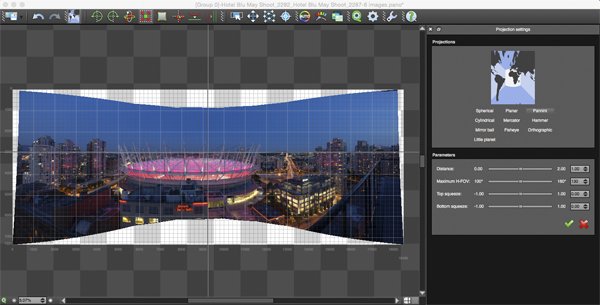
I already had good photos that I had stitched in Autopano Giga, but the parallax errors were visible despite the high overlap that was being used… so I understood the importance of respecting the nodal point as much as possible. When I finished with the Fuji W3, I went back to working with the DSLRs, because I was still not happy with the results. It was very interesting to see the result and to discover how the use of 40mm optics affects volume and dimensions. It turned out to be a great learning curve and motive that later would return to work with the more closed optics. It was a lot of work, but it was worth it, the interpolator “Spline 64” combined with the 40mm and the high overlap resulted in a good stereoscopic photo. In total there were exactly 99 photos in MPO format that had to be processed one by one. it was a very long capture that lasted nine minutes, due in part to the long recovery time of this camera after each shot.


The London Stereocopic Company asked me to design and build a Robot for the Fuji W3 stereoscopic camera, and it worked correctly, but its post-production system was very slow due to the reduced FOV of its optics, which Autopano read as 40mm, which forced me to write a rather complex robotic capture program, since the robot had to make seven rows….

A few weeks later I stayed at Brian’s guest house in London, and took pictures all over the city downtown. The (LSC) had a stand in the market place of the congress, so it was easy for me to contact them, and it was exciting to see for the first time, together with Denis Pellerin, a VR 3D 360 photo on the VR OWL. Brian May, was coming to Tenerife to participate in the STARMUS festival, so I attended. Then something magical happened! I heard that the director of the London Stereoscopic Company (LSC), the astronomer Dr. I used a 30º rotation base, 12 photos around and three rows at 0º and plus/minus 45º to which I added a photo of the Zenit because it had a small hole to cover, and two photos in Nadir at 90º. Once finished I did the programming based on the overlap I had needed to make the cylindrical panorama, but in three rows. The robotic kit that I used is a toy that is not designed to move a high load weight, which in the case of Sony their optics and batteries reached half a kilo, so I could not make a direct transmission from the servomotors and I was forced to include a gearbox that allowed me to increase the torque. I knew what I had to do, I needed an automated system with freedom of movement in two axes, which would allow me to capture the whole spheres.
PANORAMA AUTOPANO GIGA GOPRO FULL
The result was spectacular, I was impressed with being able to do a full 360º rotation using my stereoscope, but the 16mm were very short, I had two black holes at the top and bottom that had to be closed.

I could program the number of photos and shoot the cameras using a servo-driven lever system, and after each attempt I tried to stitch in Autopano Giga until I could find the optimum number of photos around. My first attempt was to build an automated system based on a robotics kit for the consumer market. I immediately realized that if I had to rotate the cameras, it would be better to put them in an upright position to get a larger field of view, keeping the interaxial distance. I had two Sony Nex 5 cameras with 16mm optics with which I had already taken many stereoscopic panoramic photos, in DCP/3D format for projection in 3D cinemas, so I thought it was a good starting point. When I started this work I was already an experienced stereographer, but my knowledge of panography was limited, as I did not yet know the importance of nodal adjustment.


 0 kommentar(er)
0 kommentar(er)
